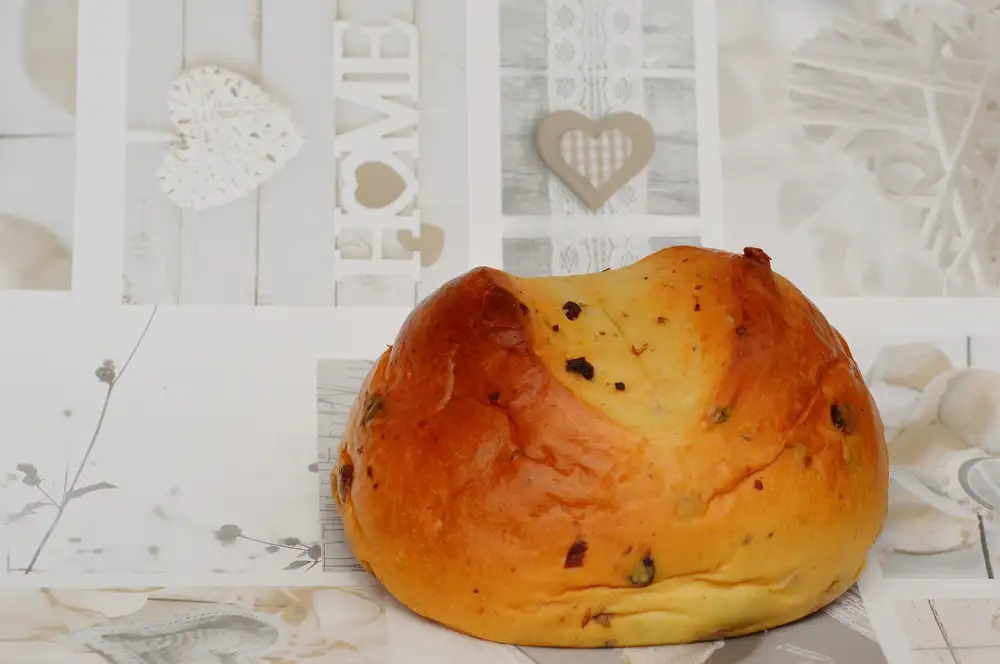Delight Your Easter Table with a Scrumptious Easter Bread Recipe

Easter bread, also known as Paschal bread or sweet bread, is a traditional delicacy enjoyed during the Easter season in many cultures around the world. This special bread holds a significant place in Easter celebrations, symbolizing the end of Lent and the arrival of spring. With its rich history and delicious flavors, Easter bread brings families and communities together to share in the joy of the holiday. Join us on a culinary journey as we explore the magic of making your own scrumptious Easter bread at home.
History and Significance of Easter Bread
Easter bread, also known as "Pasca" or "Paska," has a rich history dating back to ancient times. It is a traditional bread enjoyed by many cultures around the world during the Easter season. The significance of Easter bread varies among different traditions but is commonly associated with the resurrection of Christ and the celebration of new life. In Eastern European countries, such as Russia and Ukraine, Easter bread is often intricately decorated with symbols representing aspects of the Christian faith, such as crosses or braids symbolizing unity and eternity. The sharing of Easter bread with family and friends symbolizes love, unity, and the joy of Easter celebrations.
Ingredients Required for Easter Bread
To make a delicious Easter bread, you will need the following ingredients:
- 4 cups of all-purpose flour
- 1/2 cup of sugar
- 1 packet of active dry yeast
- 1 teaspoon of salt
- 1/2 cup of milk
- 1/4 cup of water
- 1/4 cup of butter, melted
- 3 eggs
- Zest of one lemon
- Zest of one orange
- 1/2 cup of mixed dried fruits (such as raisins, currants, and candied citrus peel)
These ingredients come together to create a rich and flavorful Easter bread that is perfect for celebrating the holiday with loved ones.
Step-by-Step Instructions for Making Easter Bread
1. In a mixing bowl, combine warm milk, sugar, and yeast. Let it sit for 5-10 minutes until frothy.
2. Add in the flour, eggs, butter, salt, and any additional flavorings like orange zest or vanilla extract.
3. Knead the dough until smooth and elastic, then cover and let it rise in a warm place for about an hour.
4. Once doubled in size, punch down the dough and shape it into a braid or round loaf.
5. Place the shaped dough on a baking sheet lined with parchment paper and let it rise again for another 30-45 minutes.
6. Preheat the oven to 350°F (180°C) while the dough rises.
7. Brush the risen dough with an egg wash for a shiny finish before baking for 25-30 minutes until golden brown.
8. Allow the Easter bread to cool before slicing and serving with your favorite spreads or toppings.
Enjoy your homemade Easter bread with loved ones during this festive season!
Tips and Tricks for Perfecting Your Easter Bread
To perfect your Easter bread, here are some tips and tricks to keep in mind:
1. Use fresh ingredients: Make sure your yeast is not expired and your flour is fresh for the best results.
2. Knead the dough thoroughly: Proper kneading helps develop gluten, resulting in a light and airy texture.
3. Allow the dough to rise properly: Let the dough rise in a warm, draft-free place until it has doubled in size for optimal fluffiness.
4. Add mix-ins strategically: Incorporate dried fruits, nuts, or spices evenly throughout the dough for a well-balanced flavor profile.
5. Brush with egg wash before baking: This will give your Easter bread a shiny golden crust.
6. Monitor baking time closely: Overbaking can result in a dry loaf, so keep an eye on your bread as it bakes.
By following these tips, you'll be on your way to creating a perfect Easter bread that will delight your guests and add a special touch to your holiday table.
Serving Suggestions and Pairings for Easter Bread
Easter bread is a versatile treat that can be enjoyed in various ways. To enhance the experience, consider serving it with a dollop of sweet butter or a drizzle of honey for added richness. For a more indulgent option, pair it with a selection of artisanal cheeses such as brie or aged cheddar to create a delightful contrast of flavors. Additionally, complement the bread with fresh fruits like berries or figs to add a touch of freshness to each bite. To elevate the presentation further, serve the Easter bread on a decorative platter alongside colorful spring flowers for a festive touch that will surely impress your guests. Enjoy this delicious bread as part of your Easter celebration and savor every moment shared around the table with loved ones.
In conclusion, Easter bread is a delightful and symbolic addition to any Easter table, with its rich history and significance dating back centuries. By following the step-by-step instructions and incorporating the essential ingredients, you can create a delicious homemade Easter bread that will impress your family and guests. Remember to add your personal touch and creativity to make it truly special. Whether enjoyed on its own or paired with butter, jam, or cheese, Easter bread is sure to enhance the festive spirit of the holiday. Embrace the tradition of baking Easter bread this season and share the joy of this culinary delight with your loved ones.
Published: 29. 04. 2024
Category: Home



